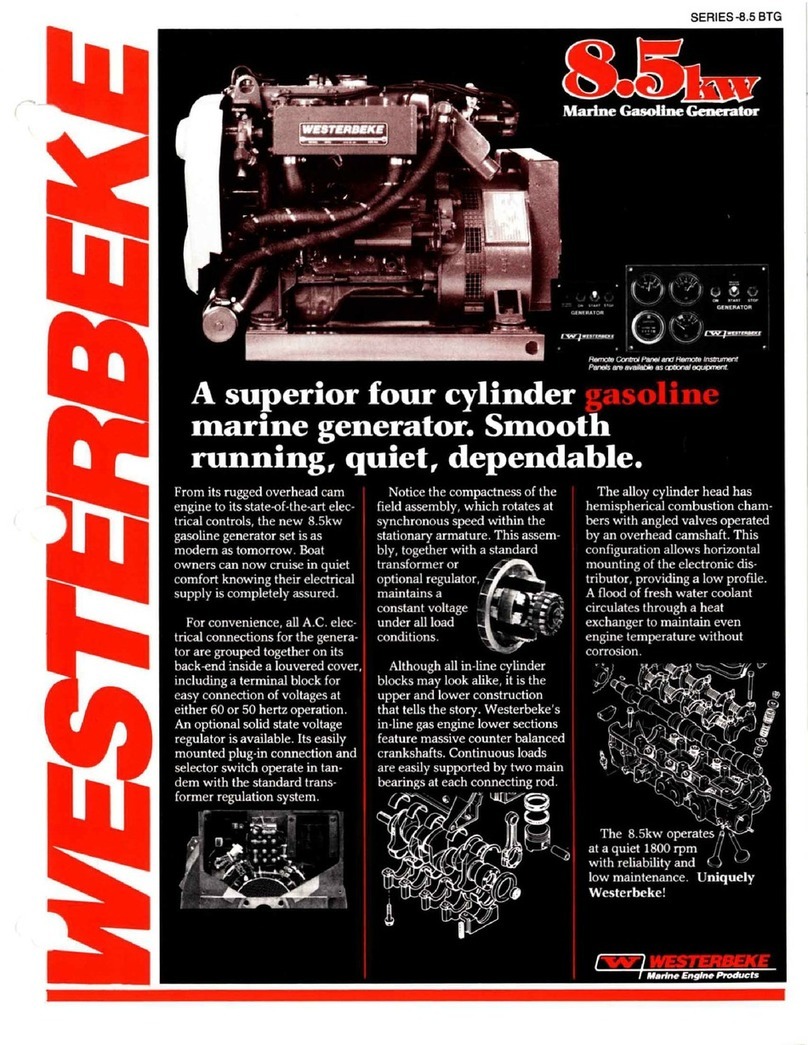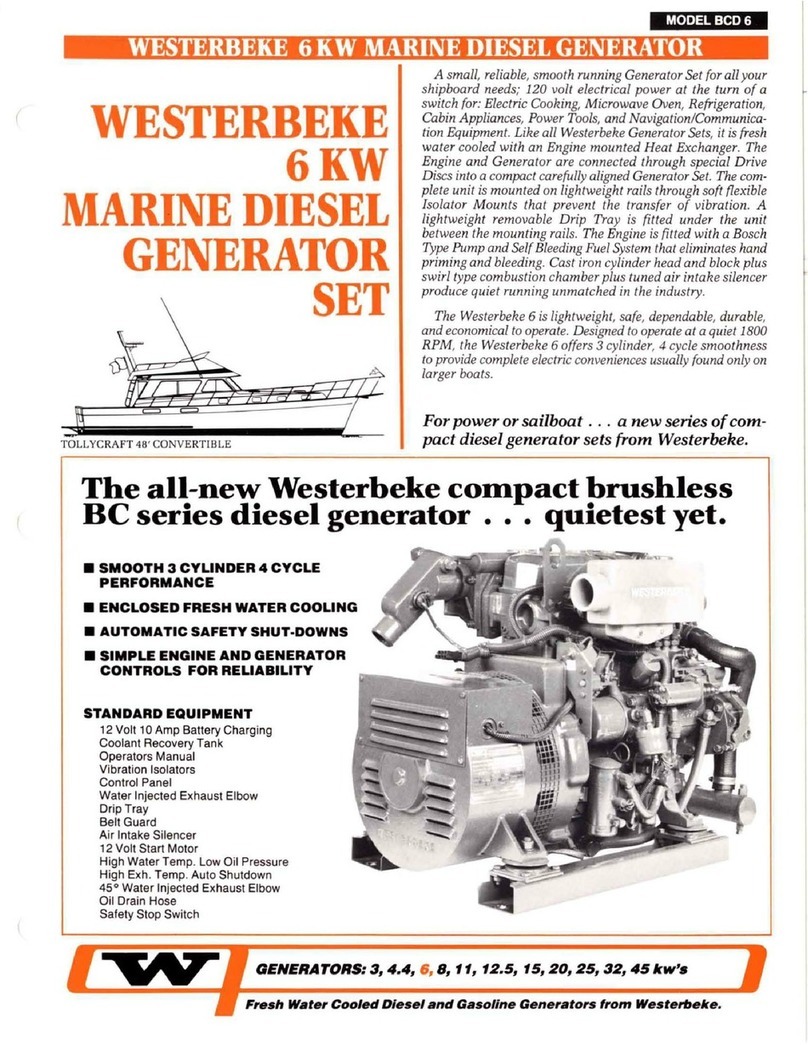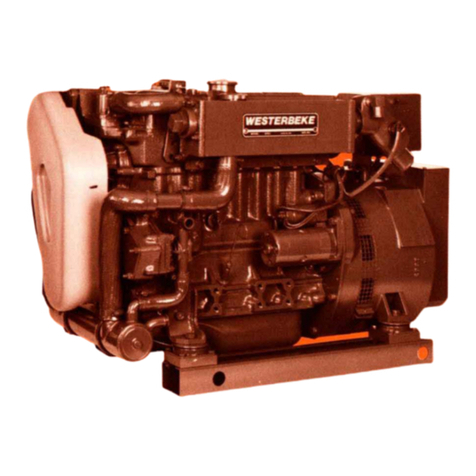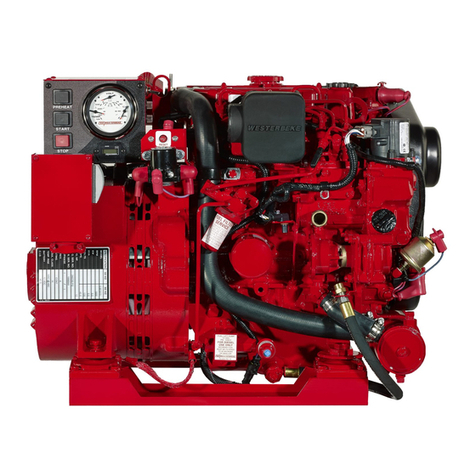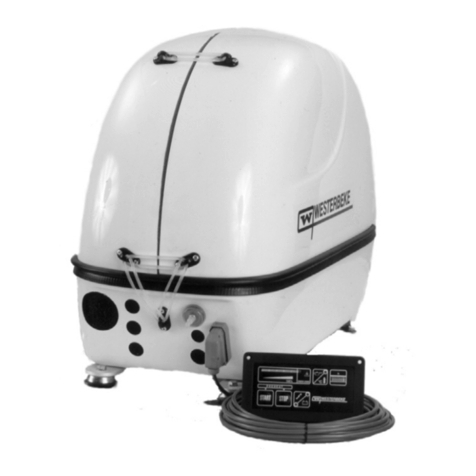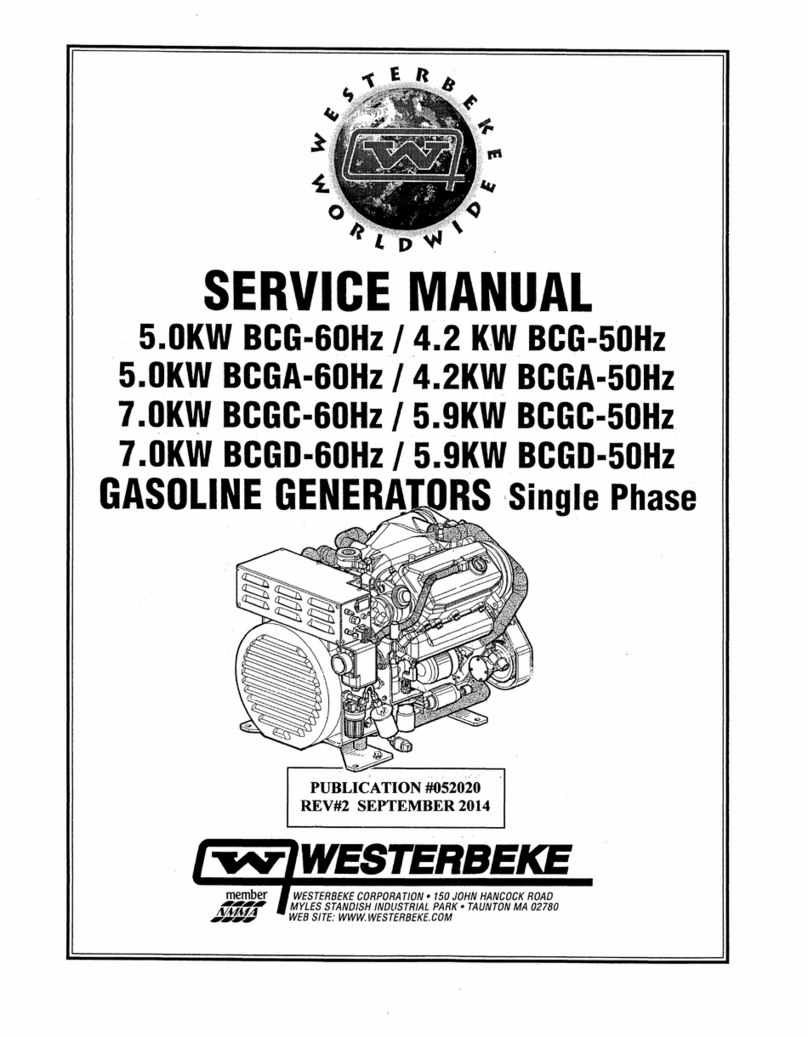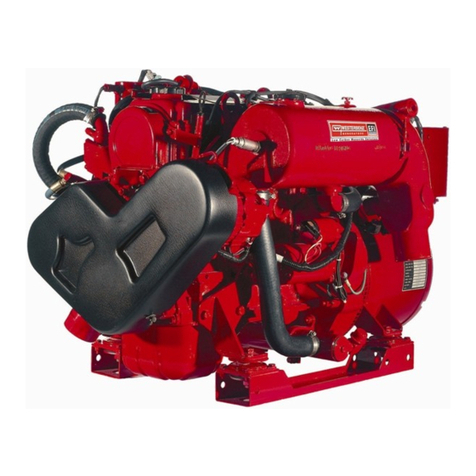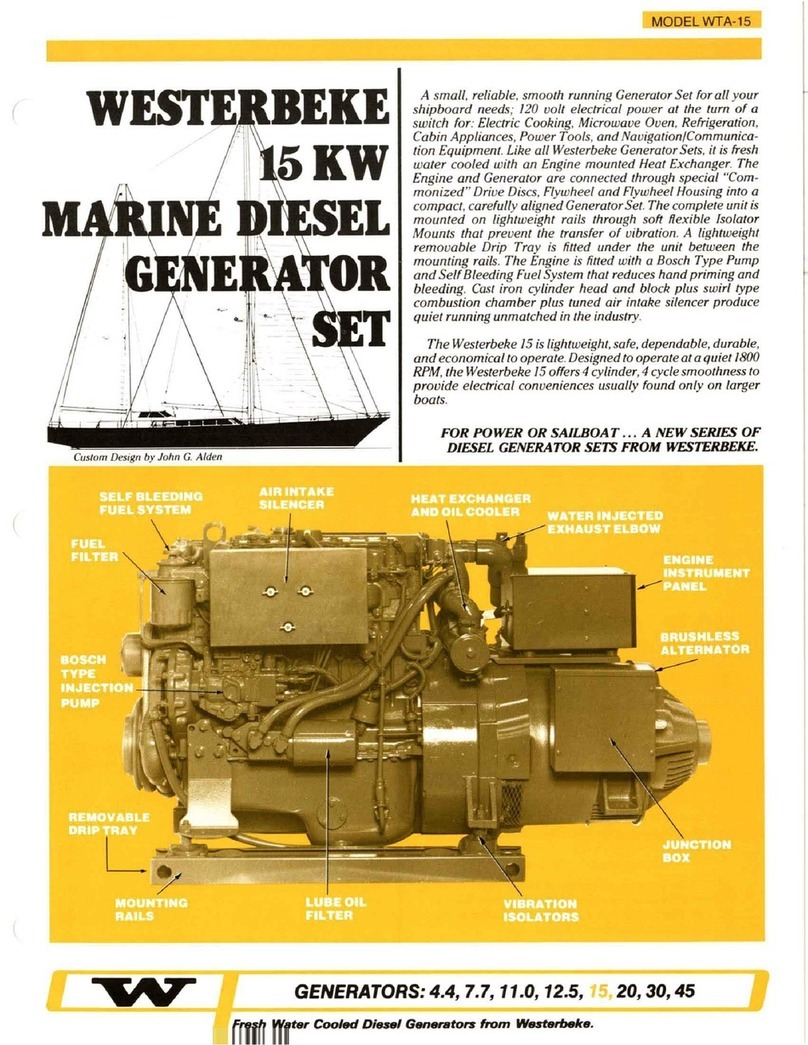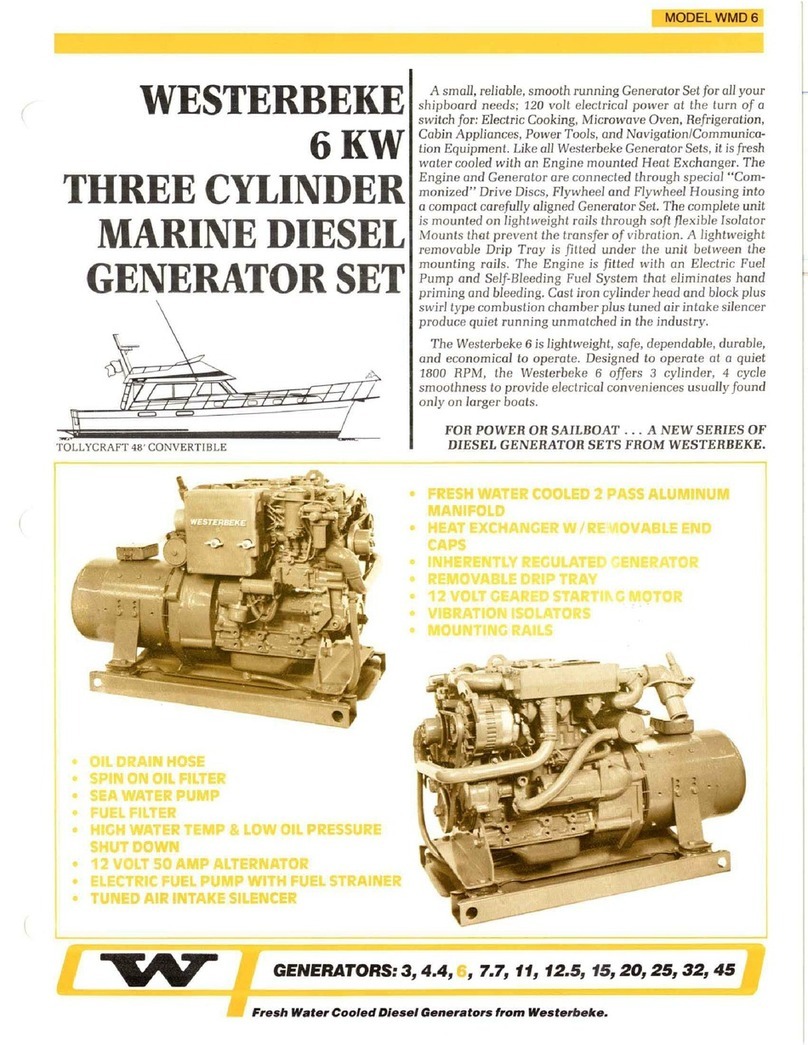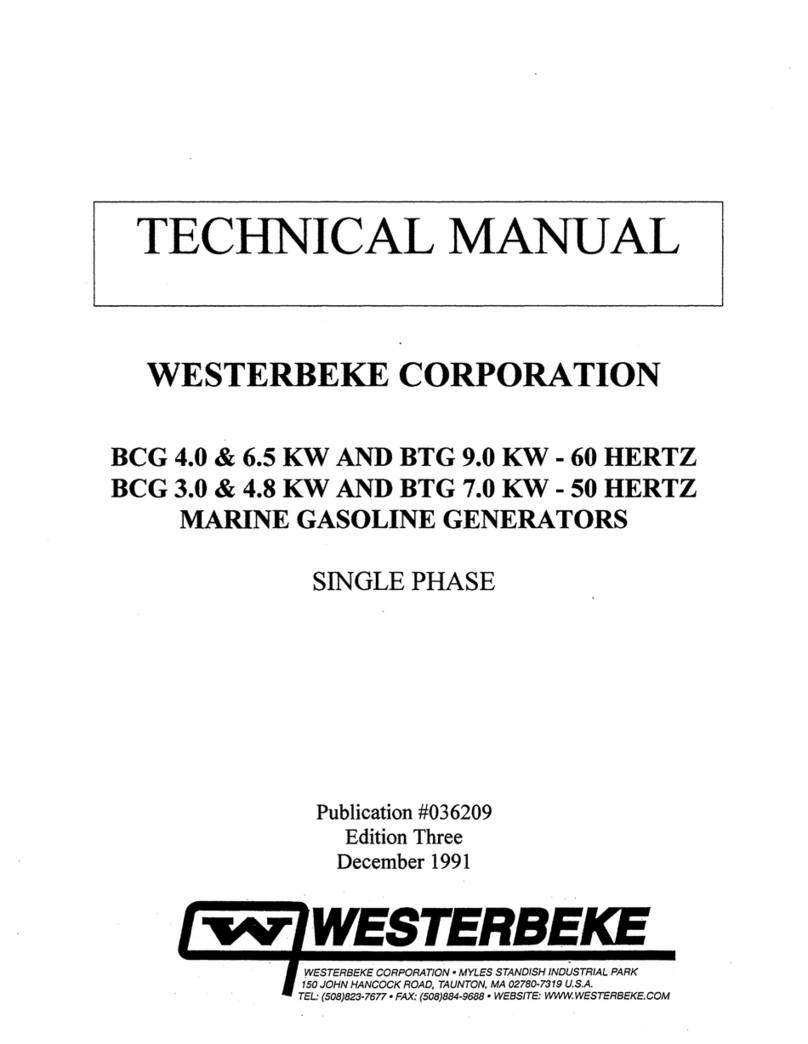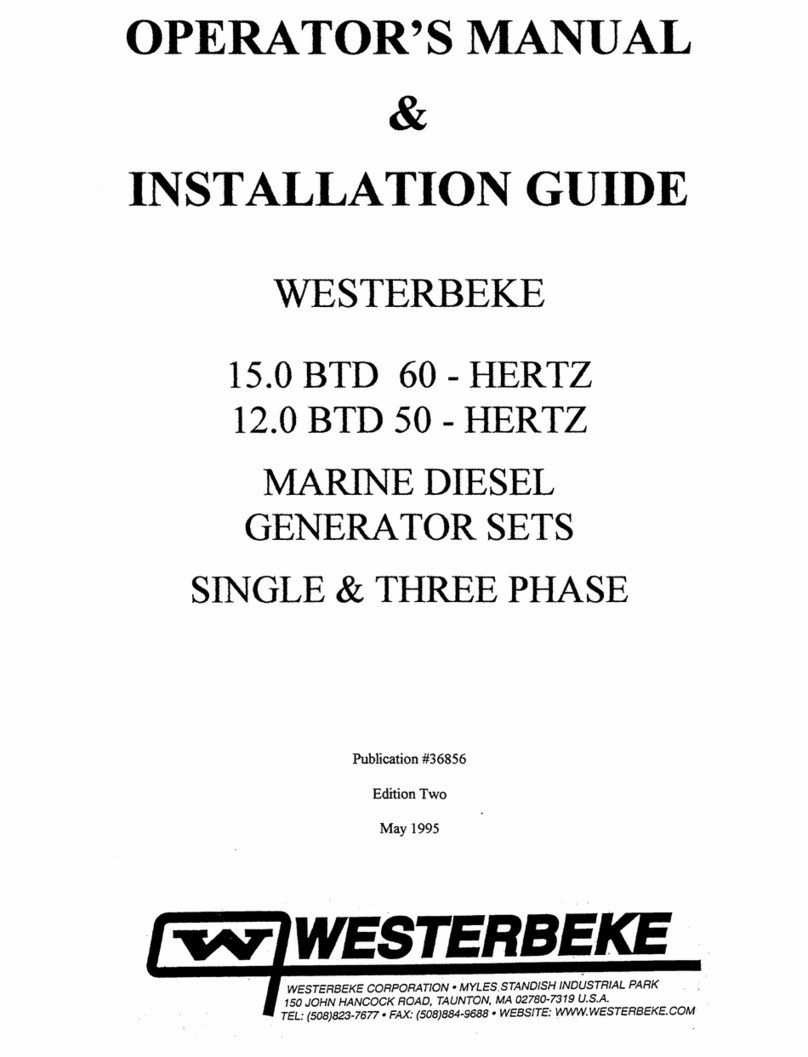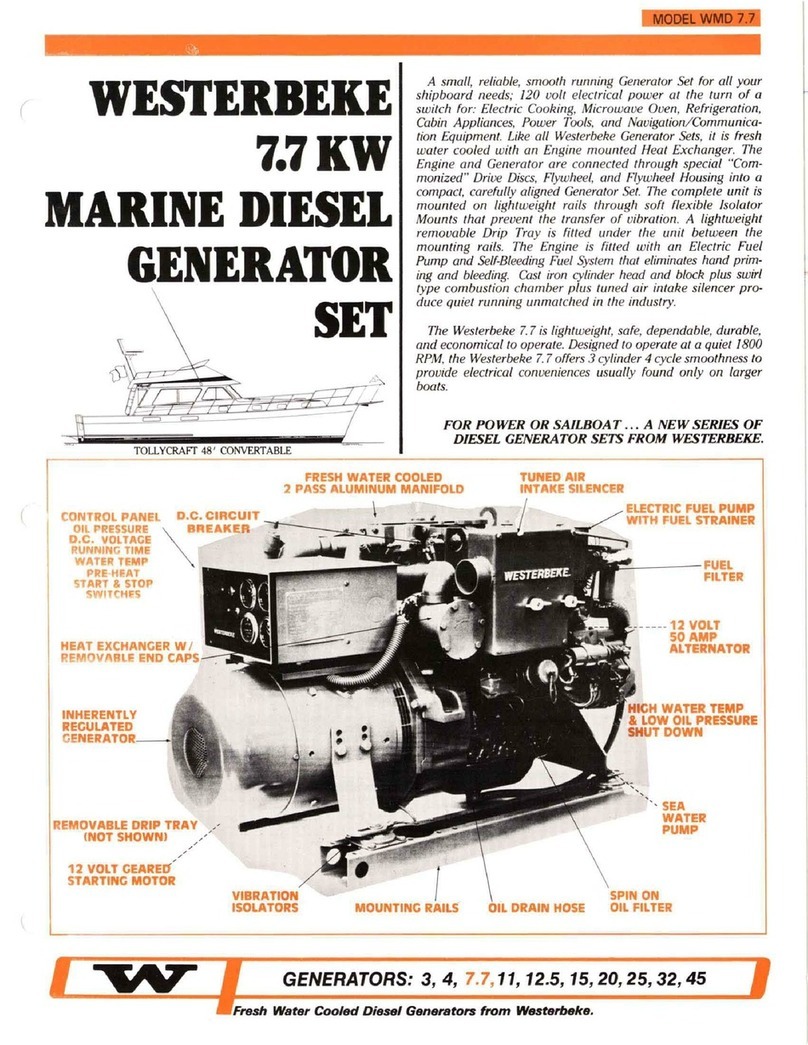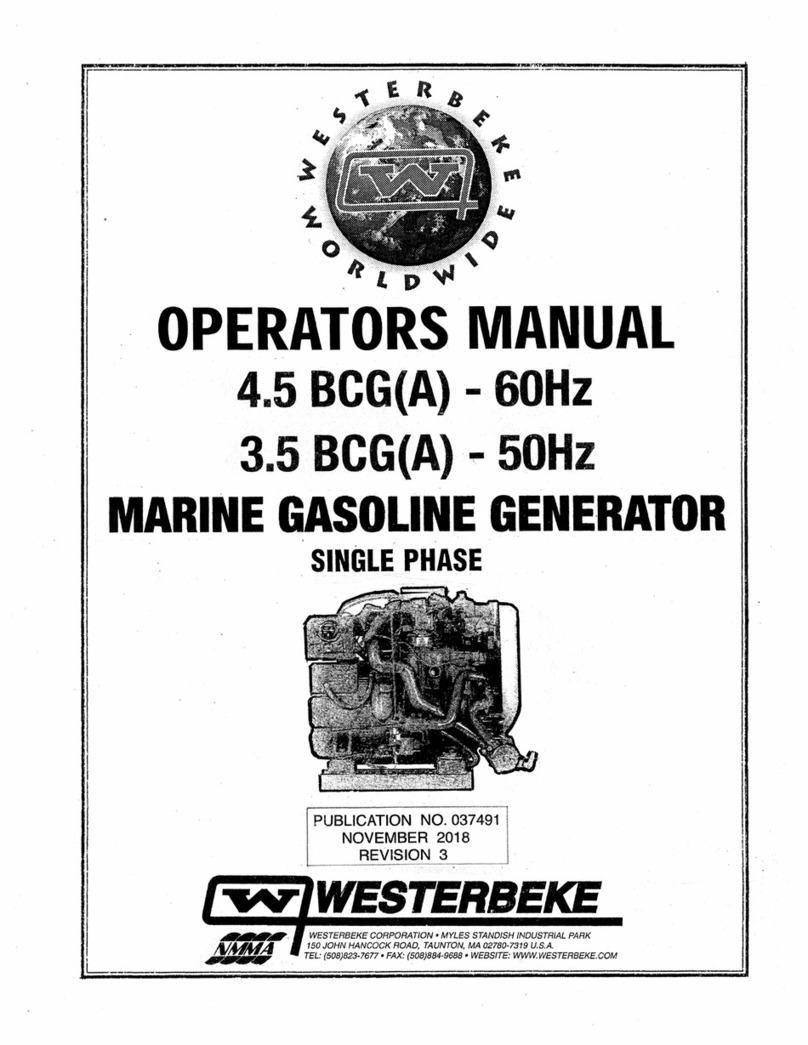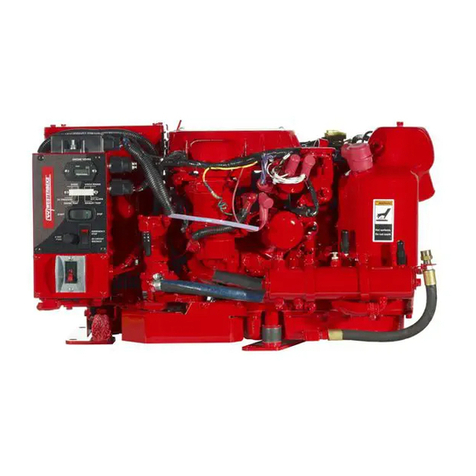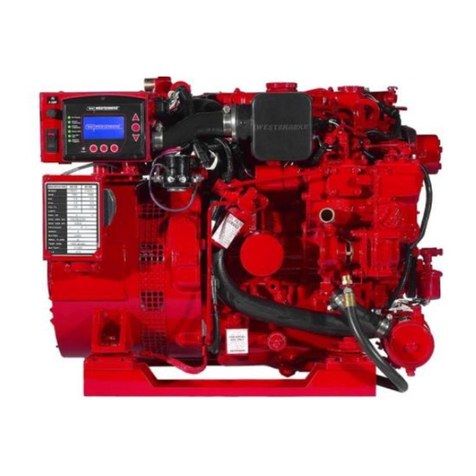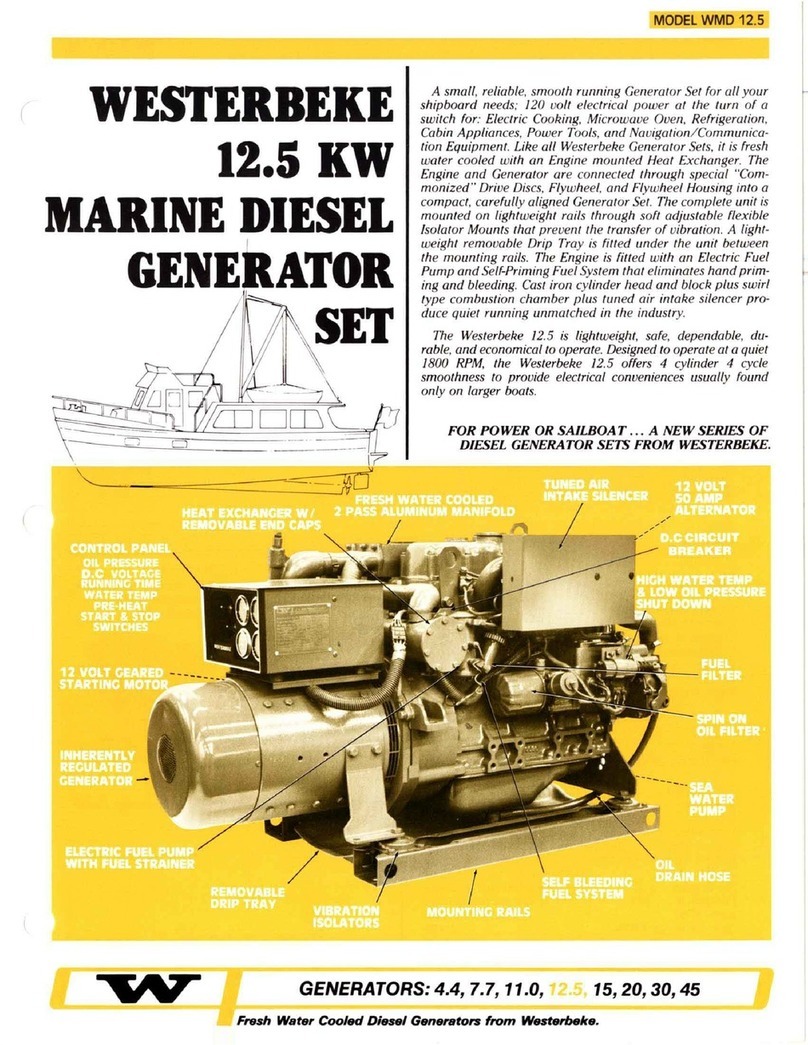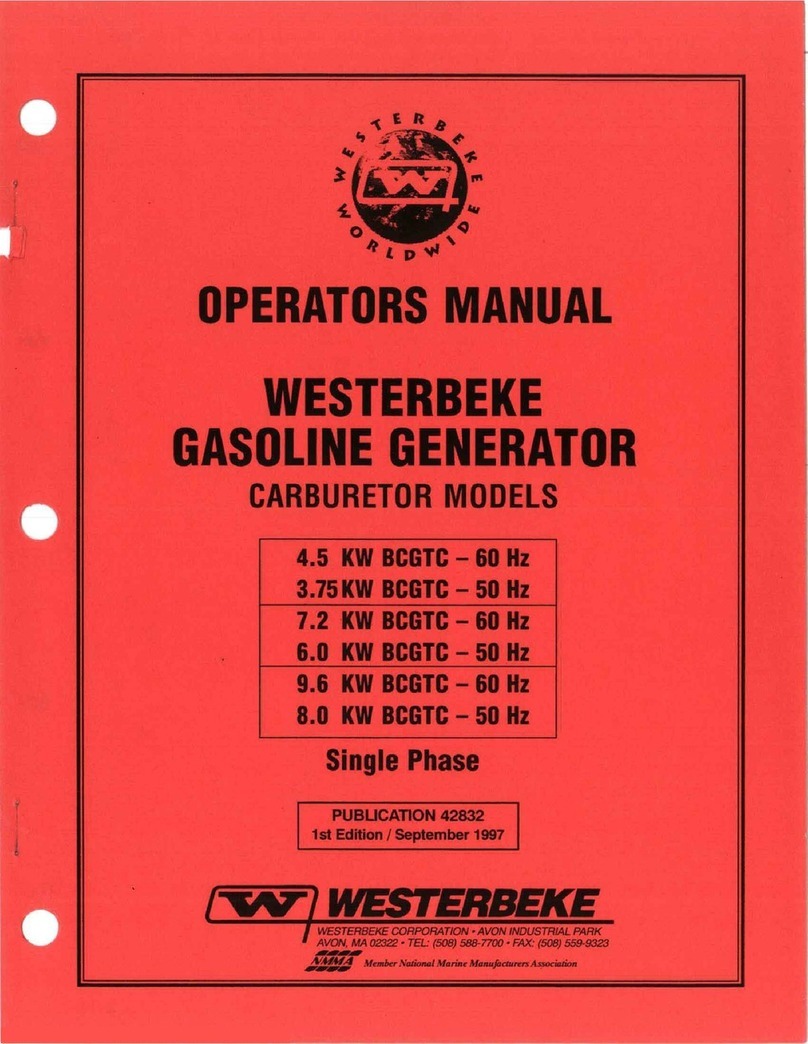
CARBON
MONOXIDE
"CO"
I
LOW-CO
GENERATORS
IMPORTANT
INFORMATION
Catalyst performance will degrade over time. As the
generator accumulates operating hours,
CO
concentrations
will increase.
The
catalyst
must
be
replaced
every 2,000
hours
of
engine operation.
Verification
of
satisfactory
CO
levels
must
be
done
seasonally
or
each
500
hours
(which
ever
occurs
first).
Verification involves actual sampling
of
exhaust gas with an
appropriate
CO
analyzer.
There are two locations where exhaust gas can
be
sampled.
Dry,
but hot, exhaust gas can be sampled at the 118NPf
plugged opening on the top
of
the water injected exhaust
elbow's casting. Measurements at this location may not be
practical in all instances due to the high exhaust temperature,
temperature limits
of
the analyzer, safety concerns over
temperatures involved or the possibility
of
high levels
of
CO.
The other location is the boat's exhaust outlet, which
contains entrained cooling water (except dry stack exhaust
systems). Only analyzers with probes should be used at this
location and it is critical that the probe not ingest water.
Probe-type analyzers have an air pump drawing a gas sample
through the probe. As a result, they tend to ingest water when
it is present.
Be
sure to aim the probe downwards with the
opening pointed in the direction
of
the water flow and just
out
of
the flow. Position the analyzer as high as possible with
the tubing leading to the probe running continuously down-
hill. Observe the usually translucent tubing between the
probe and the analyzer and
be
sure no water is being
ingested.
If
any water is ingested into the analyzer, it must be
repaired
or
replaced and recalibrated.
When measuring
CO
at the exhaust outlet be aware
of
the
ambient
CO
level by also measuring
CO
away from and
upwind
of
the exhaust outlet. especially in marinas. the
CO
level at the exhaust will be influenced upwards by the
ambient level.
For
changing
the
exhaust
catalyst
and
measuring
the
exhaust
back
pressure,
refer
to
the
Table
of
Contents.
Whenever taking the time to verify proper
CO
levels from the
exhaust with a
CO
analyzer, always take theopportunity to
use the analyzer to
"sniff'
around the engine looking for CO
from exhaust leaks. Pay close attention to the connection
of
the cylinder block to the sump plate, the sump plated to the
water injected exhaust elbow casting and all subsequent
downstream exhaust components and hoses and connection
points. Remember, exhaust gas that has not yet passed
through the catalyst is raw exhaust, untreated exhaust gas and
is very high in
CO
content.
Analyzers usually require periodic calibration. Follow the
instructions that come with the analyzer very carefully
regarding calibration.
The following are manufacturers that offer CO analyzers:
Extech, TIF, Testo, TSI, Bacharach, Fluke, Monoxor, Fyrite,
ZellwgwerAnalytics, Industrial Scientific Corp, GFG, TPI,
Teledyne and others. Westerbeke recommends analyzers with
a probe connected to the analyzer by a length
of
transparent
tubing. They are slightly more expensive than those with the
sensor built into one end
of
the analyzer,
but
they allow you
to sample the exhaust coming out
of
the boat's exhaust outlet.
Engines & Generators
vi
